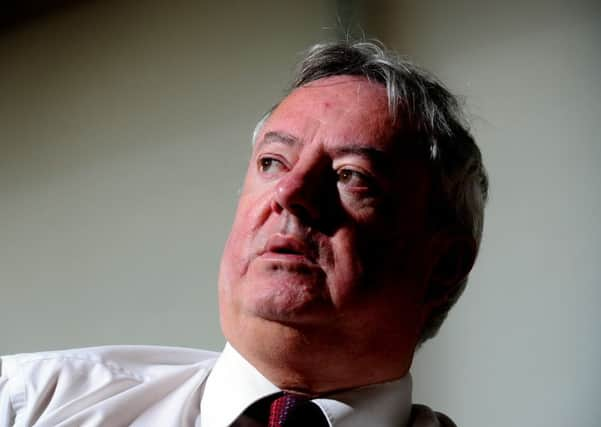University bosses under fire as huge pay increases are revealed


Figures released today revealed that Huddersfield University boss Professor Bob Cryan has enjoyed a 67 per cent rise in cash terms from 2010/11 to get a salary of £364,564 in 2015/16.
The analysis, by the Times Higher Education (THE) magazine, comes amid a growing row over vice-chancellors’ pay, with Universities Minister Jo Johnson urging restraint and warning institutions they could be hit with fines in the future if they cannot justify paying their bosses more than the Prime Minister.
Advertisement
Hide AdAdvertisement
Hide AdTHE compared leaders’ pay packages in 2010/11 – the year it was decided fees would rise to a maximum of £9,000 in England – with 2015/16, the latest year for which figures are available.
In a small number of cases nationally, in which institutions did not have a change of vice-chancellor during the analysis period, bosses have seen their pay settlements, including pension and benefits, rise by more than a third in cash terms.
But the magazine reported average pay for all academic staff fell by 2.8 per cent in real terms over this five-year period, and by 3.1 per cent for professors only –although these figures do not include pension contributions.
Huddersfield University said that its leader, Professor Bob Cryan, had his salary frozen for four years from October 2008 at his own request due to the financial conditions in the sector at the time. By 2010/11 Prof Cryan’s remuneration had reportedly fallen “significantly behind the rest of the sector”, with many newly-appointed vice-chancellors getting greater starting salaries than that enjoyed by Prof Cryan.
Advertisement
Hide AdAdvertisement
Hide AdThe university has seen “sustained high-level performance” over a period of time, and Prof Cryan’s salary has increased to a level “that is commensurate with the significant transformation of the university and the associated peer recognition in terms of the many accolades received”, the institution said.
It added that Prof Cryan’s salary is still 20 per cent below that of the highest paid vice-chancellor.
Two other universities also saw overall remuneration rise by more than half in cash terms –Bournemouth had a 53 per cent increase to £305,000 and Roehampton a 52 per cent jump to £342,000.
The findings show that for those institutions where there was no change in vice-chancellor in either 2010/11 or 2015/16, they on average saw their total remuneration – including wages, pension and benefits – rise from nearly £242,000 to just more than £278,000 five years later – a 15 per cent rise.
Advertisement
Hide AdAdvertisement
Hide AdOnce inflation is taken into account, this is a seven per cent rise in real terms, the THE said.
Out of 114 universities for which there was comparable data, 44 saw the cost of their leader’s office increase by at least 20 per cent in cash terms, the analysis found, which is almost 12 per cent in real terms.
It comes less than a week after Universities Minister Jo Johnson said that if university bosses want the wages of footballers and bankers they are “simply in the wrong business”.
He also outlined plans to instruct the new regulator, the Office for Students (OfS), to take a series of steps designed to curb pay hikes.
These include insisting that universities justify any pay of more than £150,000 – the current salary of Theresa May.